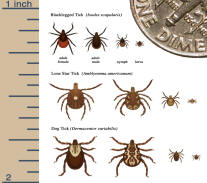Lyme Disease
Awareness, Prevention, and Care
 Causes & Transmission
Causes & Transmission
Tick Life Cycle and Risk
Ticks pass through four life stages: egg, larva, nymph, and
adult. Among these, the nymph stage is the most dangerous
because these ticks are extremely small, difficult to detect,
and often transmit the infection. They thrive in warm, humid
environments such as grassy meadows or forested areas with
abundant wildlife.
How Ticks Spread the
Disease
Ticks acquire the bacteria by feeding on small animals like mice
or deer, and later transmit it to humans (Crosby, 2015). In most
cases, the tick must stay attached for 36–48 hours to
successfully pass the infection (Mayo Clinic, 2022). Quick
removal can lower the risk, but their painless bites often
remain unnoticed.
Geographic Variations
Different strains, such as
Borrelia afzelii and
Borrelia garinii, cause Lyme disease in Europe and Asia
(Stanek et al., 2012). These variations can lead to slightly
different symptoms and require specialized diagnostic methods.
Transmission Facts
Lyme disease cannot be spread from person to person. Awareness
of tick habitats, the feeding duration required for infection,
and high-risk regions is essential for prevention.
| Tick Life Stages |
| Stage | Size | Risk Level |
| Egg | - | low |
| Larva | very small | low |
| Nymph | poppy seed size | high |
| Adult | sesame seed size | Medium |